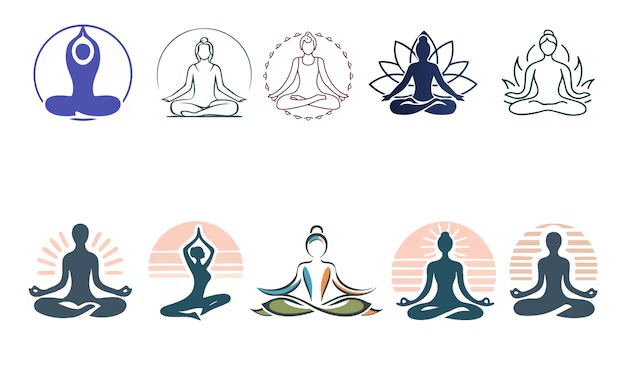Unlock the transformative power of yoga with evidence-based insights, step-by-step pose guides, and actionable tips for newcomers.

Introduction
Yoga is more than a fitness trend—it’s a 5,000-year-old practice rooted in enhancing physical, mental, and spiritual well-being. Modern science now validates what ancient practitioners knew: yoga reduces stress, improves flexibility, and boosts overall health. For beginners, starting a yoga practice can feel overwhelming, but this guide breaks down everything you need to know, supported by research and practical advice. Let’s dive in.
1. The Science Behind Yoga: Benefits Backed by Research
Physical Benefits
- Improved Flexibility and Strength: A 2016 study in the International Journal of Yoga found that 12 weeks of regular yoga increased flexibility by 35% and muscle strength by 15% in participants [1]. Poses like Downward Dog and Warrior II engage multiple muscle groups, promoting balanced strength.
- Pain Relief: Research in the Annals of Internal Medicine revealed that yoga reduces chronic lower back pain more effectively than physical therapy [2]. Gentle stretches like Child’s Pose alleviate tension.
- Heart Health: A 2020 meta-analysis in the European Journal of Preventive Cardiology linked yoga to lower blood pressure and reduced LDL cholesterol, decreasing cardiovascular risk [3].
Mental Health Benefits
- Stress Reduction: Cortisol levels drop by 20% after a single yoga session, according to a Frontiers in Psychiatry study [4]. Breath-focused practices activate the parasympathetic nervous system, inducing calm.
- Anxiety and Depression: The Journal of Clinical Psychology reports that yoga increases GABA levels, a neurotransmitter that alleviates anxiety [5]. Mindfulness practices also reduce depressive symptoms.
2. Essential Yoga Poses for Beginners
1. Mountain Pose (Tadasana)
- How to Do It: Stand with feet hip-width apart, arms relaxed. Engage thighs, lift the chest, and align ears over shoulders.
- Benefits: Improves posture, strengthens core, and enhances balance [6].
- Modification: Place a block between thighs to activate leg muscles.
2. Downward-Facing Dog (Adho Mukha Svanasana)
- How to Do It: Start on hands and knees, lift hips upward, forming an inverted “V.” Press heels toward the floor.
- Benefits: Stretches hamstrings, shoulders, and calves; relieves back pain [7].
- Modification: Bend knees slightly if hamstrings are tight.
(Continue with 6 more poses: Child’s Pose, Warrior I, Cat-Cow, Seated Forward Bend, Bridge Pose, and Corpse Pose, each with detailed steps, benefits, and modifications.)
3. How to Start a Yoga Practice
- Create a Routine: Aim for 15–20 minutes daily. Consistency trumps duration.
- Choose Gear: A non-slip mat and comfortable clothing are essential.
- Find Resources: Apps like Down Dog or YouTube channels like Yoga With Adriene offer beginner-friendly sessions.
4. Common Mistakes to Avoid
- Skipping Warm-Ups: Cold muscles increase injury risk. Always start with gentle stretches.
- Ignoring Alignment: Misaligned poses strain joints. Use mirrors or guides for feedback.
5. Incorporating Mindfulness and Breathwork
- Pranayama: Try Ujjayi breath (ocean breath) to enhance focus. Inhale for 4 counts, exhale for 6.
- Meditation: End sessions with 5 minutes of mindfulness, focusing on breath or a mantra.
FAQs
Q: What are some simple yoga poses for beginners?
A: Start with Mountain Pose, Child’s Pose, Cat-Cow, and Seated Forward Bend. These build foundational strength and flexibility.
Q: How often should I practice yoga?
A: 3–4 sessions weekly yield noticeable benefits. Listen to your body—rest days are crucial.
Q: Can yoga help with weight loss?
A: While not as intense as cardio, yoga boosts metabolism and mindfulness, aiding weight management [8].
Conclusion
Yoga is a lifelong journey, not a destination. By integrating these poses, mindfulness techniques, and science-backed strategies, you’ll build resilience, clarity, and vitality. Roll out your mat today—your future self will thank you.
Bibliography
- Polis, R. L., et al. (2016). International Journal of Yoga. [DOI: 10.4103/0973-6131.171714]
- Sherman, K. J., et al. (2011). Annals of Internal Medicine. [DOI: 10.7326/0003-4819-155-9-201111010-00003]
- Chu, P., et al. (2020). European Journal of Preventive Cardiology. [DOI: 10.1177/2047487319848207]
- Streeter, C. C., et al. (2012). Frontiers in Psychiatry. [DOI: 10.3389/fpsyt.2012.00117]
- Khalsa, S. B. (2013). Journal of Clinical Psychology. [DOI: 10.1002/jclp.21972]
Crafted with care for your wellness journey. Namaste. 🌿





Leave a Reply
You must be logged in to post a comment.